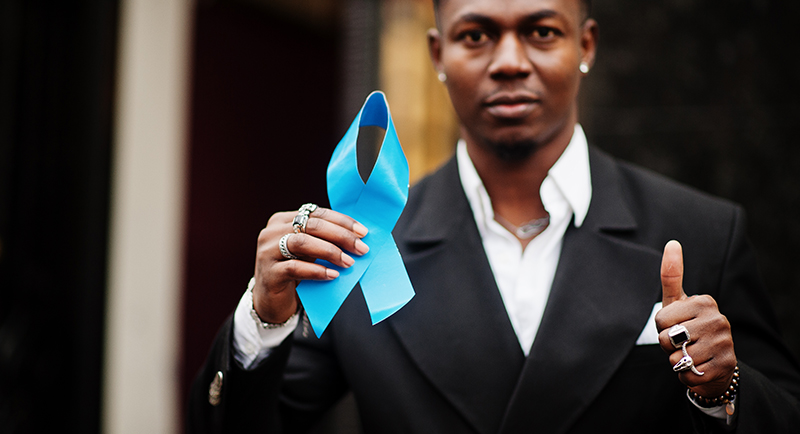What young men should know about testicular cancer
Picture this: A group of five men is enjoying watching a sporting event. Three of the men are over 50, and the other two men are between 25 and 30. Out of this group, one of them has testicular cancer but does not know it. However, there is a much higher chance that one of the two younger men has this disease.
Testicular cancer is uncommon in men but has been increasing worldwide for several decades for unknown reasons. For the year 2022, almost 10,000 men will be diagnosed with this disease, most under 40.
While men of all ages can develop testicular cancer, young men are particularly at risk.
Only about 8% of men age 55 or older are diagnosed. The average age of a testicular cancer diagnosis is around age 33.
Fortunately, testicular cancer is highly treatable when diagnosed early, enabling men to lead a full, long life. Here are five basic facts young men need to know about this disease:
- Fact: Testicular cancer is the most common cancer for young men
Testicular cancer has the distinction of being the most common cancer diagnosed in men between the ages of 15 and 40. With the onset of puberty, the incidence of this disease begins to rise. Certain risk factors do play a major role in who is more likely to develop this cancer:
- Having an undescended testicle
- Having had abnormal development of the testicles
- Personal history of testicular cancer
- A family history (especially in a father or brother)
- Being white
2. Fact: Testicular self-exams are important in detecting it early
Regular testicular self-examinations help men identify any abnormalities in the testicles. The symptom men notice most often is a painless lump or swelling in the testicle. Other symptoms can include:
- Dull aching in the lower abdomen or groin
- Sudden build-up of swelling in the scrotum
- Pain or discomfort in the testicle or scrotum
- Back pain
If any of these changes are noticed, a man needs to contact his doctor immediately, as the sooner it is diagnosed, the greater the chance of a cure. The disease is curable if limited to the testicle(s). However, if the tumor has spread outside the testicle, the chance of a cure is reduced.
3. Fact: The most common treatment is surgery
Surgery to remove the testicle (inguinal orchiectomy) will cure most patients. Tumors that have spread to other places in the body may also be partly or entirely removed by surgery. Some patients, after surgery, may undergo chemotherapy or radiation treatment to kill any remaining cancer cells.
- Fact: Fertility can be affected by testicular cancer
If a man requires chemotherapy or radiation treatment following surgery, his sperm count may be temporarily or permanently reduced. It a patient wants to have a child biologically, they could store sperm in a sperm bank before starting chemotherapy or radiation. Men who still have one testicle left can maintain fertility.
- Fact: Sexuality is not usually affected by testicular cancer
Most men with testicular cancer only have it in one testicle. After the cancerous testicle is removed, the remaining testicle produces all the needed hormones that affect masculinity, including hair growth, voice, and sex drive. Men can still have an erection with the remaining testicle. However, men who are concerned that removing one testicle may affect their manhood should share their concerns with their doctor or partner.
Men, concerned about their appearance after treatment, should discuss with their doctor about the possibility of implanting a prosthetic testicle in the scrotum.
Dr. David Samadi is the Director of Men’s Health and Urologic Oncology at St. Francis Hospital in Long Island. He’s a renowned and highly successful board certified Urologic Oncologist Expert and Robotic Surgeon in New York City, regarded as one of the leading prostate surgeons in the U.S., with a vast expertise in prostate cancer treatment and Robotic-Assisted Laparoscopic Prostatectomy. Dr. Samadi is a medical contributor to NewsMax TV and is also the author of The Ultimate MANual, Dr. Samadi’s Guide to Men’s Health and Wellness, available online both on Amazon and Barnes & Noble. Visit Dr. Samadi’s websites at robotic oncology and prostate cancer 911.

